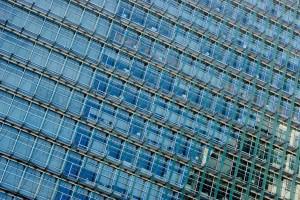 Standing at two ends of the sustainability spectrum, inoperable windows (picture most any large skyscraper in any town) and efficient lighting seem to represent opposite ends of the conversation vis-a-vis sustainable practices. Efficient lights demonstrate the steps we have taken to illuminate interior spaces that ostensibly would be dark otherwise. However, natural light is a free, inexhaustible resource. Yes, the sun doesn’t always shine and buildings may need to be lit up at night or other times of darkness, but the fact that light bulbs have become more efficient belies the fact that they are terribly inefficient. Natural light is the optimal choice when it comes to lighting a space. For schools and office complexes, the prime time for occupancy is during daylight hours. Innovations like daylighting tubes can bring natural light into interior spaces that otherwise may not have the benefit of “natural” illumination. Even though lighting may be efficient, doesn’t mean it’s the most sustainable option.
Standing at two ends of the sustainability spectrum, inoperable windows (picture most any large skyscraper in any town) and efficient lighting seem to represent opposite ends of the conversation vis-a-vis sustainable practices. Efficient lights demonstrate the steps we have taken to illuminate interior spaces that ostensibly would be dark otherwise. However, natural light is a free, inexhaustible resource. Yes, the sun doesn’t always shine and buildings may need to be lit up at night or other times of darkness, but the fact that light bulbs have become more efficient belies the fact that they are terribly inefficient. Natural light is the optimal choice when it comes to lighting a space. For schools and office complexes, the prime time for occupancy is during daylight hours. Innovations like daylighting tubes can bring natural light into interior spaces that otherwise may not have the benefit of “natural” illumination. Even though lighting may be efficient, doesn’t mean it’s the most sustainable option.
This brings me to inoperable windows. Last month I had the opportunity to tour a number of LEED certified projects as part of the workshop I led, “Buildings as Teaching Tools.” A number of the facilities earned silver certification (or higher), but had inoperable windows. These buildings were designed to minimize energy use, but they had to shut out the natural world to completely control and maintain balance inside. Large mechanical systems regulate airflow, temperature, etc. Opening a window can upset the delicate balance. Where does that leave individuals who want some fresh air while they sit in their office?
Just because a building has “green” features (LEED certified mechanical systems that maintain an “optimal” indoor air environment and highly efficient lighting) doesn’t mean they’ll perform that way. Leaving efficient lights on all the time negates their goal, though sensors help alleviate the issue. Being unable to open a window because it may upset the balance in a building is not ideal. These systems have numerous advantages over older, less efficient ones that fail to take indoor air quality into account, but there’s got to be a happy medium between an overly mechanized, sterile office space and one that is more integrated with the natural world. I’ve said it before, and I’ll say it again, efficiency (by itself) is not the key to sustainability.
[Image source]

